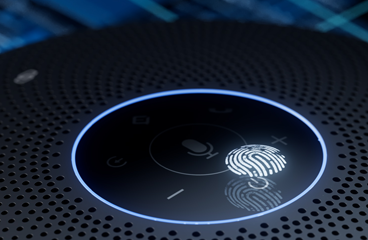When attending a poorly organized meeting, whether it's a virtual or in-person meeting, you often encounter chaotic or awkward situations. However, in 2023, we can follow some practical general meeting etiquette rules to make meetings more professional.
Below, we will discuss the concept of meeting etiquette, the importance of business meeting etiquette, and tips for maintaining good meeting etiquette.
What is Meeting Etiquette?
Meeting etiquette refers to behavioral norms that should be followed during meetings, reflecting the application of social customs in a work environment. While meeting rules may vary depending on the type of meeting and company culture, some general etiquette applies to most situations. Good meeting etiquette is a crucial social skill in the workplace, allowing you to demonstrate professionalism and respect for others' time and efforts.
Why is Meeting Etiquette Important in Business?
Business meeting etiquette is essential in the business environment. It is a significant component of corporate culture and image and directly impacts a company's productivity and success. The behavior and conduct of participants are crucial in ensuring the efficient flow of meetings.

-
Fostering a favorable environment and building rapport
By warmly and attentively welcoming clients, and making them feel your sincerity, you can negotiate in a respectful and harmonious atmosphere. This helps build rapport and makes it easier to find mutually acceptable and beneficial points of convergence.
-
Shaping a favorable image and driving successful deals
In business meetings, the personal image often represents the corporate image. A well-presented personal image tends to leave a lasting impression on the other party, generating goodwill toward the company, reducing negotiation resistance, and driving successful deals.
-
Deepening understanding and fostering friendships
Good etiquette norms help both sides better understand and communicate, leading to finding mutually acceptable solutions. Through communication and collaboration, both parties can establish friendships and become long-term partners.
Good business etiquette helps foster positive relationships. In an environment where individuals are valued and respected, flourishing relationships are built. Therefore, maintaining good meeting etiquette not only showcases your professional image but also contributes to enhancing the reputation of the entire team and organization.
Rules of Professional Meeting Etiquette
Before the Meeting
1. Consider Everyone's Schedules
When scheduling a meeting, it's important to consider everyone's calendars. Whether it's a virtual or in-person meeting, choosing a convenient time is crucial. For virtual meetings, consider participants from different locations and time zones. It's necessary to consult with the attendees in advance to determine a suitable time. When selecting the time, compromises may be needed, but ensure that most participants are satisfied with the schedule.
2. Prepare the Meeting Agenda and Template in Advance
- Set the meeting agenda: Clearly define the theme and purpose of the meeting and break it down into specific topics. List each topic with a brief description and allocate the required time for discussion. This helps ensure a well-organized meeting. Ensure the agenda is clear and concise, including titles and brief descriptions for each topic.
- Allocate time for each agenda item: Based on the importance of the agenda and estimated discussion time, allocate appropriate time for each item. Ensure that each topic has enough time for discussion and decision-making while avoiding excessively long meetings.
- Use a meeting agenda template: Choose a suitable meeting agenda template based on the nature and type of the meeting. Templates provide structure and guidance to organize the agenda and remind participants of important topics and tasks. You can use existing templates or customize them as needed.
- Assign tasks and preparation work: Send the agenda to the participants in advance and assign relevant tasks and preparation work. Notify them of any materials, reports, or other information they need to prepare before the meeting to ensure more comprehensive and efficient discussions.
Preparing the meeting agenda and template provides a clear structure and direction for the meeting, allowing participants to be informed about the topics in advance and come prepared. This helps improve the efficiency and outcomes of the meeting. Additionally, assigning tasks and preparation work ensures a smooth flow of the meeting and allows everyone to actively participate.
3. Determine the Meeting Scale and Necessary Equipment
Determining the scale of the meeting and the necessary equipment is crucial. Choose a venue that accommodates the number of participants without being overcrowded or too spacious. Ensure that the meeting room is equipped with necessary devices such as audiovisual technology to facilitate connection with remote participants. Conduct equipment testing before the meeting to ensure smooth operation. This way, the meeting can proceed smoothly without concerns about technical disruptions.
4. Dress Appropriately
Dress appropriately according to the occasion and company culture. Select suitable attire based on the formality and dress code of the meeting. This helps establish a professional image for yourself.

At the Meeting
1. Be There on Time
Punctuality is an important rule of business etiquette. As the host, arrive early and start the meeting on time. Set time limits for each agenda item to avoid prolonged discussions. For topics that require conclusions, notify participants in advance to come prepared. Guarantee a seamless and productive flow of the meeting.
2. Assign Roles
Assigning the roles of a leader and a note-taker in a business meeting helps organize the proceedings. The leader guides the meeting towards its objectives, while the note-taker is responsible for minutes and follow-up actions. Utilizing a meeting minutes template can streamline the process. Clearly designating these two roles contributes to a smooth flow of the meeting.

3. Speak Loudly and Clearly
Speaking loudly and clearly is crucial during meetings. This ensures that participants can hear and understand your speech, captures their attention, encourages their engagement in discussions, and demonstrates confidence and authority. Additionally, speaking loudly and clearly overcomes noise and distance limitations in large or remote meetings, ensuring that everyone can hear your voice.
4. Introduce Yourself and Others
Introducing yourself and others during the meeting helps establish connections, facilitate communication and collaboration, and increase participation and engagement. By introducing attendees, everyone can better understand each other's backgrounds and expertise, fostering more meaningful discussions and collaborations. Furthermore, introducing others helps build trust and cooperative relationships, creating favorable conditions for a successful meeting and achieving its goals.
5. Active Listening
Active listening means genuinely paying attention to others' viewpoints and opinions, and demonstrating respect and understanding. To do so, asking questions and seeking clarification can help ensure accurate comprehension. Additionally, using positive language and body language conveys attentiveness and interest. Furthermore, asking meaningful questions and providing positive encouragement can promote effective dialogue and communication.
6. Express Opinions Politely
Polite expression of opinions is an important aspect of creating a positive work environment and effective communication during meetings. Choose a friendly, objective, and appropriate tone and language to express your views. Avoid using overly assertive or aggressive wording to prevent conflicts or misunderstandings. Also, give others enough time and space to express their opinions and respect their right to speak.

7. Ask Questions at the Appropriate Time
Asking questions at the right time is an important way to actively participate and facilitate discussions. To ask questions at the right time, first, pay attention and understand others' viewpoints and opinions. Timing is key, avoiding interrupting others or asking questions at irrelevant moments. Asking clear questions can guide others' thinking and responses.
8. Be Attentive to Your Nonverbal Cues
Behaving appropriately during meetings helps maintain your professional image and keeps the attention of other participants. Here are a few behaviors to steer clear of:
- Restlessness, rocking back and forth, or spinning in your chair.
- Organizing, flipping through documents, or opening unrelated computer windows.
- Bouncing legs or feet, tapping pens, or making other noises.
9. Avoid Eating and Drinking
Not allowing eating and drinking during meetings is to maintain good meeting order and focus. Eating and drinking may cause noise and distract attention, affecting the participation and concentration of others. Additionally, eating and drinking can leave an impression of disrespect and unprofessionalism, which is not conducive to establishing a formal business atmosphere.
10. Schedule Time for Breaks
Scheduling breaks is an important aspect of meetings, providing participants with an opportunity to relax and recharge, especially for longer meetings. Plan reasonable break durations, usually between 5 to 15 minutes, to ensure participants have sufficient rest. During breaks, you can organize simple activities such as stretching exercises, team-building exercises, or group discussions to enhance participants' energy and interaction.
11. Mute Yourself
Keeping yourself on mute during meetings can reduce distractions and background noise, ensuring focused and clear discussions. Especially in large conference calls, echo-prone environments, or noisy situations, it is recommended to keep yourself on mute.
After the Meeting
1. Thank Everyone for Participating
Thank the attendees for their presence and contributions. This acknowledges and appreciates their participation, sharing of opinions, and dedication of time. It also helps build positive working relationships and promotes team collaboration.
2. Evaluate the Meeting and Follow Up on Deliverables
Evaluating the meeting can help identify areas for improvement and optimization to enhance the efficiency and outcomes of future meetings. Following up on deliverables ensures that the topics discussed in the meeting are promptly implemented and executed. You can use a meeting follow-up email template to track attendees' progress.
Example of a Meeting Minutes Recap and Follow-Up Email:


Meeting evaluation:
- Review the agenda and objectives, and assess the expected outcomes.
- Examine organization and processes to ensure efficiency and order.
- Gather feedback from participants to understand areas for improvement.
- Summarize highlights and areas for improvement, and develop a plan for future enhancements.
Follow-up on deliverables:
- Confirm tasks and assign responsibilities.
- Set deadlines and requirements.
- Communicate regularly to track progress and provide support.
- Verify the caliber and comprehensiveness of deliverables.
- Ensure completion before the next meeting and prepare for discussion and review.
By evaluating the meeting and following up on deliverables, you can promptly identify issues and take action to maximize the effectiveness and outcomes of the meeting.
Farewell Advice
Good meeting etiquette can showcase an individual's leadership potential and teamwork abilities, providing more opportunities for personal development and career growth. At the same time, maintaining a high level of professionalism and respect is the core element of meeting and business etiquette.



